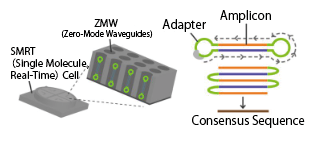- HOME
- Products & Services
- Application Selection Guide
- PacBio Amplicon Sequencing
-
Oligonucleotide API CDMO
-
Custom DNA/RNA Synthesis
-
Next Generation Sequencing
- Next Generation Sequencing
-
Application Selection Guide
- Application Selection Guide
- Human Genome Sequencing
- Whole Genome Sequencing (Non-Human)
- Microbial genome sequencing
- Small scale sequencing (NGS Petit)
- GRAS-Di® Genotyping
- Repeat Motif Detection
- Library Prep for Challenging DNA Samples
- Gene Expression Analysis (Reference-Based)
- Isoform Sequencing (full-length mRNA-seq)
- De novo Transcriptome Sequencing
- Small RNA-Seq
- Microbial Community Analysis
- Shotgun Metagenomic Sequencing
- Metatranscriptome Sequencing
- ChIP-Seq
- CRISPR Screening
- Illumina Amplicon Sequencing
- PacBio Amplicon Sequencing
- Standard Pipeline Data Analysis
- Custom Data Analysis
- Gene Analysis from Pathological Specimens
- Sequencer Models and Sequencing Principles
- Sample Requirements
- How to Order
- Scientific Publications
-
Custom DNA Sequencing
-
Custom DNA Microarray
-
Protein Related Service
-
Laboratory Tools and Service
PacBio Amplicon Sequencing
Overview
PacBio amplicon sequencing allows the determination of full-length sequences for PCR products approximately 1 – 2 kb in size.
Analysis Principle
PCR products are library-prepared without fragmentation, and a single molecule of cDNA is repeatedly sequenced within the small pores of the SMRT Cell.
The consensus sequence of reads from a single pore is referred to as the Circular Consensus Sequence (CCS). The CCS represents the full-length sequence information of the PCR product.

Workflow

Specifications
| Platform | Please inquire |
| Data Amount |
Data Analysis
【CCS Creation】
Creation of Circular Consensus Sequences (CCS) from sequencing data.
【Read Count】
Aggregation of identical sequences from the CCS, followed by counting the types and occurrences of detected sequences.
